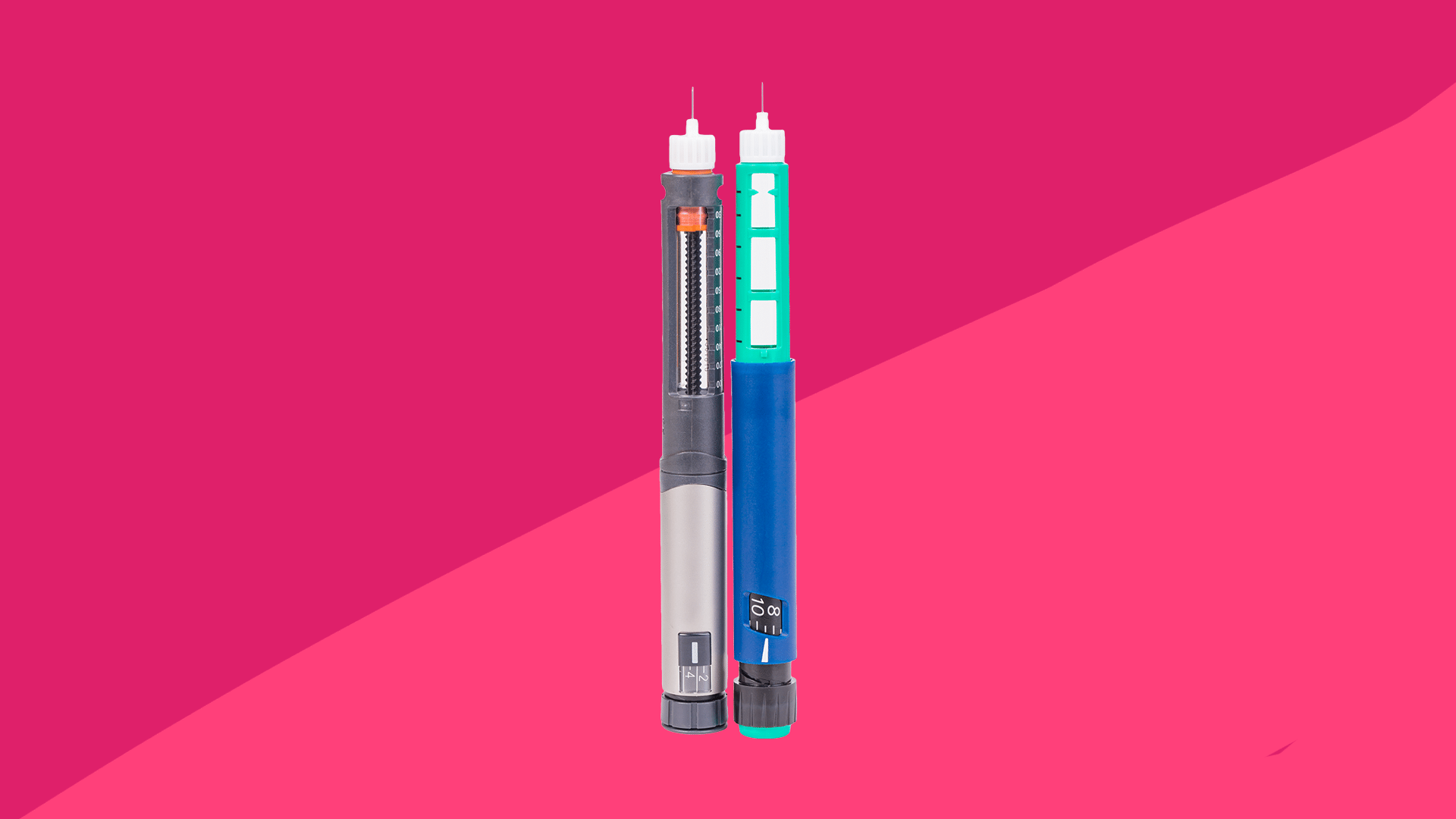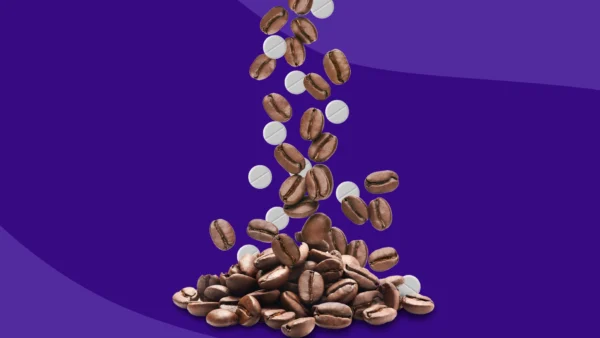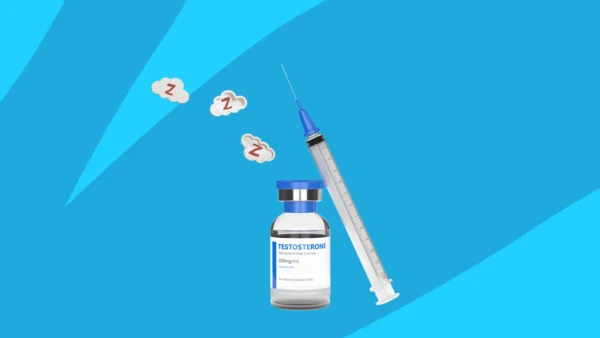Does Ozempic cause weight loss? | How does Ozempic help you lose weight? | Who can take Ozempic for weight loss? | Is Ozempic safe? | Ozempic alternatives for weight loss | How to maximize Ozempic benefits
Type 2 diabetes is the most common type of diabetes, a condition of high blood sugar levels that affects more than 11% of the U.S. population. Healthcare professionals recommend medication—along with diet and exercise—to help manage blood sugar levels in people with Type 2 diabetes. Because obesity is a risk factor for Type 2 diabetes, losing weight can help improve blood sugar control.
Ozempic (semaglutide) is a pre-filled injectable pen approved by the Food and Drug Administration in 2017 to help manage blood sugar levels in people with Type 2 diabetes mellitus and to reduce the risk of major adverse cardiovascular events in people with Type 2 diabetes and established cardiovascular disease. Manufactured by Novo Nordisk, Ozempic is a medication that belongs to a drug class called glucagon-like peptide 1 (GLP-1) receptor agonists that are non-insulin treatments for people with Type 2 diabetes. It is not meant to treat people with Type 1 diabetes.
In this article, we’ll discuss using Ozempic for weight loss: its efficacy, safety, and alternatives.
RELATED: What is Ozempic? | Get Ozempic without insurance
Does Ozempic cause weight loss?
While Ozempic lowers blood sugar, it also can help with weight loss. Ozempic is not approved by the FDA for weight loss, but it is often prescribed off-label (for an indication that is not FDA approved) for this use. What’s more, Ozempic contains the ingredient semaglutide—as does the medication Wegovy, which is FDA approved for weight management. Average weight loss with Ozempic will vary based on individual factors.
In the SUSTAIN clinical trials, semaglutide consistently demonstrated blood sugar control and weight loss in participants with Type 2 diabetes and obesity.
The Semaglutide Treatment Effect in People with Obesity (STEP) program was conducted to study people who were either overweight or obese, but did not have diabetes. The study used once weekly semaglutide dosed at 2.4 mg. The results showed a weight loss of 14.9% from baseline after 68 weeks (about 16 months) of semaglutide in addition to lifestyle changes. More specifically, about 70% of participants achieved a weight loss of at least 10%, and about 50% achieved a weight loss of 15% or more.
These findings are important because weight loss of 10% to 15% (or more) is recommended in overweight and obese people with associated complications (such as prediabetes, hypertension, and obstructive sleep apnea). The current study results suggest that the recommended goal weight loss and obesity treatment can be achieved with semaglutide.
How does Ozempic help you lose weight?
Ozempic, like all GLP-1 agonists, works by:
- Helping the pancreas release insulin (to help bring blood sugar down) when blood sugar is high
- Decreasing glucagon production (glucagon increases blood sugar, so decreasing its production helps limit blood sugar spikes)
- Slowing the movement of food through the stomach, which may cause appetite loss and weight loss
Who can take Ozempic for weight loss?
After the significant results from clinical trials and despite not being approved for weight loss, some healthcare professionals have begun using Ozempic off-label for weight loss. However, Ozempic should not be used for everyone. Ozempic should not be used in people with personal or family history of medullary thyroid carcinoma (a type of thyroid cancer) or in patients with multiple endocrine neoplasia syndrome type 2.
Ozempic dosing for weight loss is generally the same as Ozempic dosing for blood sugar management. Ozempic is injected subcutaneously (under the skin) of the stomach, thigh, or upper arm. Generally, healthcare professionals will start the patient on the lowest dose of 0.25 mg weekly for four weeks. After four weeks, the dose will increase to 0.5 mg weekly. After at least four weeks, the dose may be increased to 1 mg weekly, if needed. Some patients will require another dosage increase, after at least four more weeks, to 2 mg weekly. The maximum Ozempic dose is 2 mg per week.
It is important to use Ozempic exactly as directed and only make dosage changes under the direction of your healthcare provider. Dosage changes will be based on response to treatment as well as how well you tolerate any side effects. Many people find that they can stay at a dose of 0.5 mg or 1 mg weekly.
You can discuss weight loss goals and progress with your healthcare provider. Average weight loss can vary greatly, depending on many factors including the Ozempic dosage and other lifestyle changes that are employed along with the medication.
Is Ozempic safe?
Like any medication, there are potential side effects. The most common side effects are gastrointestinal in nature and include:
- Nausea
- Vomiting
- Diarrhea or constipation
- Stomach pain
- Burping
- Indigestion
- Reflux
- Gas
Patients with diabetic retinopathy should be closely monitored, because a temporary worsening of this condition may be a side effect of taking Ozempic.
In some cases, serious side effects may occur. In addition to the risk of thyroid cancer, serious side effects may include:
- Allergic reactions, which can be life-threatening
- Swelling
- Kidney problems or kidney failure
- Inflammation of the pancreas
- Inflammation of the gallbladder
- Gallstones
- Fainting
This is not a full list of side effects and others may occur. Before taking Ozempic, you can talk to your doctor about potential side effects and weigh the risks versus benefits.
Ozempic alternatives for weight loss
Ozempic is not appropriate for everyone. Some patients cannot tolerate the side effects or may not see the desired results. Others may seek an alternative due to insurance coverage or a manufacturer shortage situation. Regardless of the reason for seeking an Ozempic alternative, there are various suitable alternatives available.
Wegovy
In 2021, the FDA approved the brand name medication Wegovy (semaglutide) for weight loss as another injectable drug with the same active ingredient as Ozempic. Wegovy is indicated for chronic weight management in addition to a reduced calorie diet and increased physical activity in people with a body mass index (BMI) of 30 kg/m2 or greater (obesity) or a BMI of 27 kg/m2 or greater (overweight) in the presence of at least one weight-related comorbid condition. These comorbid conditions include hypertension (high blood pressure), Type 2 diabetes, or dyslipidemia. The condition of dyslipidemia is an imbalance of lipids such as cholesterol, low-density lipoprotein cholesterol (LDL-C), triglycerides, and high-density lipoprotein (HDL).
The difference between Ozempic and Wegovy is the dose. Ozempic can be dosed up to 2 mg once a week whereas Wegovy can be dosed up to 2.4 mg once a week. The higher doses of semaglutide available in Wegovy are associated with greater weight loss. In the specific population studied for Wegovy, on average people lost 35 pounds after 68 weeks (about 16 months). Whereas in the specific population studied for Ozempic, people lost about 9 pounds with the 0.5 mg dose and people lost about 12 pounds with the 1 mg dose.
Ozempic vs. Wegovy |
||||
|---|---|---|---|---|
| Form of semaglutide | Starting dose | Maintenance dose | Maximum dose | Average weight loss* |
| Ozempic | 0.25 mg once weekly for 4 weeks | 0.5 mg once weekly. May increase to 1 mg once weekly after at least 4 weeks. | 2 mg once weekly | 9 pounds on 0.5 mg dose. 12 pounds on 1 mg dose. |
| Wegovy | Weeks 1-4: 0.25 mg once weekly
Weeks 5-8: 0.5 mg once weekly Weeks 9-12: 1 mg once weekly Weeks 13-16: 1.7 mg once weekly |
2.4 mg once weekly | 2.4 mg once weekly | About 35 pounds |
* Average weight loss in specific population studied.
Rybelsus
Additionally, an oral tablet form of semaglutide, Rybelsus, was approved in 2019. This is the first approved oral GLP-1 receptor agonist and gives people with Type 2 diabetes a non-injectable option. Like Ozempic, Rybelsus currently is only approved for use in people with Type 2 diabetes mellitus to improve blood sugar control. It is not FDA approved for weight loss, but healthcare professionals may prescribe it off-label for weight management. Rybelsus has demonstrated weight loss in people with an average weight loss of 8 pounds observed in a 6-month study.
RELATED: Could one of these 7 prescription weight-loss pills be right for you?
Trulicity
Ozempic and Trulicity are both GLP-1 receptor agonist medications and effective at lowering blood sugar levels in people with Type 2 diabetes. Like Ozempic, Trulicity has shown to cause weight loss but is not FDA-approved as a weight-loss medication. Just as Ozempic has demonstrated, the higher the dose of Trulicity, the more weight loss expected. In Trulicity studies, an average weight loss of 6.6 pounds occurred with the 1.5 mg dose, a weight loss of 8.4 pounds occurred with the 3 mg dose, and a weight loss of about 10 pounds occurred with the 4.5 mg dose. The manufacturer of Trulicity does state that on average, study participants experienced weight loss, but some did not lose weight. While Ozempic has shown evidence of slightly greater amounts of average pounds lost, either medication may help people with Type 2 diabetes lose weight.
Metformin
Metformin is a common oral medication used in people with Type 2 diabetes to help lower blood sugar. With evidence that some people have lost weight while taking metformin, studies with mixed results have been performed to investigate if metformin is an effective weight-loss treatment in people without Type 2 diabetes.
In the study, Effectiveness of Metformin on Weight Loss in Non-Diabetic Individuals with Obesity, it was determined that metformin can be an effective drug to reduce weight in an outpatient setting in insulin sensitive and insulin resistant overweight and obese patients. The study found an average weight loss in the metformin treated group after six months was 5.8 kg (about 12.8 pounds).
Like Ozempic, metformin is not approved as a weight-loss medication and is sometimes prescribed off-label by healthcare professionals for people trying to lose weight. For people not interested in using an injectable medication like Ozempic, metformin may be considered for weight loss.
Related: Ozempic alternatives
Other diabetic medications that may cause weight loss
Several other diabetic medications have shown to cause weight loss. This can often be a desirable effect of these medications for people with Type 2 diabetes. Diabetic medications that may cause weight loss include:
- GLP-1 receptor agonists:
- Byetta (exenatide): a twice daily injection approved for Type 2 diabetes
- Bydureon BCise (exenatide): a once weekly injection approved for Type 2 diabetes
- Adlyxin (lixisenatide): a once daily injection approved for Type 2 diabetes
- Victoza (liraglutide): a once daily injection approved for Type 2 diabetes and cardiovascular event risk reduction
- Trulicity (dulaglutide): a once weekly injection approved for Type 2 diabetes and cardiovascular event risk reduction
- Amylin mimetics:
- Symlin (pramlintide) injection
- SGLT2 inhibitors: the following are oral medications
Related: Saxenda
How to maximize Ozempic benefits for weight loss
1. Inject Ozempic on the same day each week
Ozempic is given once a week as an injection into the fatty part of the skin. The best spots to inject Ozempic include the top of the thigh, belly area, or upper arm. For people who have never given themselves an injection, a healthcare provider can help demonstrate and explain the best techniques. It’s best practice to rotate injection sites each week.
If a missed dose occurs, the dose should be taken as soon as possible. If it is less than 48 hours until the next dose, the dose should be skipped and returned to the normal time.
2. Inspect the pre-filled pen before each injection
Ozempic pre-filled pens should have a clear, colorless solution. Do not use the pen if the solution looks cloudy, is leaking, changes color, or has particles. The prescribing information can be reviewed for more information about the appearance of Ozempic.
3. Store Ozempic in the refrigerator before using
Ozempic should be stored between 36- and 46-degrees Fahrenheit in the refrigerator prior to first use. Do not freeze Ozempic pre-filled pens. After using the pen for the first time, it can be stored for 56 days at controlled room temperature (59 degrees to 86 degrees Fahrenheit) or in a refrigerator. Keep the pen cap on when not in use. The pens should be protected from excessive heat and sunlight.
After using Ozempic, remove and discard the needle in a sharps container. Store Ozempic without a needle attached. Do not reuse needles—use a new needle for each weekly injection.
4. Take Ozempic with or without food
Eating food or having an empty stomach does not affect the way Ozempic works. The dose of Ozempic can be taken at any time of day so that it’s most convenient for the person.
5. Use caution when drinking alcohol
While Ozempic isn’t known to interact with alcohol, consuming excess amounts of alcohol can lower blood sugar. For people with diabetes, monitoring blood sugar is important to prevent symptoms of hypoglycemia (low blood glucose).
RELATED: What are normal blood glucose levels?
Additionally, Ozempic may increase the risk for pancreatitis (inflammation of the pancreas). Heavy alcohol consumption can also increase the chance for pancreatitis. In order to help avoid pancreatitis, heavy alcohol use should be avoided while taking Ozempic.
6. Review all medications with a healthcare professional
When starting a new medication, it’s important to review all current medications with a healthcare professional such as the prescribing doctor or a pharmacist. This includes meds that are prescriptions, over the counter, and vitamins or supplements. With Ozempic, this is especially important as there are dose adjustments that may need to occur while using it with insulin or sulfonylureas (such as glipizide or glimepiride).











